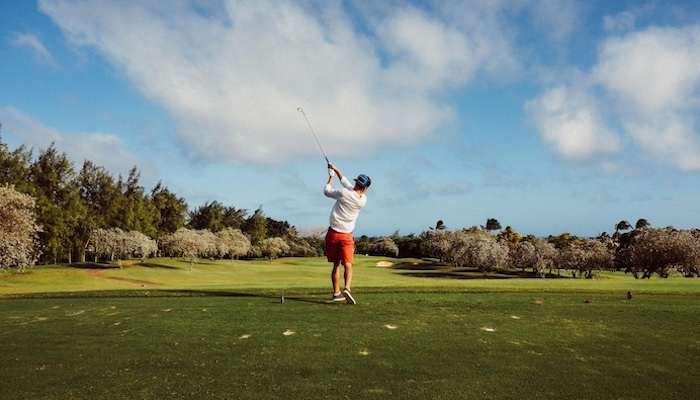
Low Back Pain in Golfers: Causes and Prevention
Low back pain is a significant concern for many golfers during and after play. This common condition affects both athletes and non-athletes, impacting enjoyment and, in severe cases, leading to pain and disability.
Understanding the causes of low back pain is crucial for prevention.
What Causes Low Back Pain in Golfers?
Golf requires a powerful rotational force to propel the ball down the fairway, prioritizing distance and accuracy. During the swing, golfers rotate at approximately 85 degrees per second during the backswing and 200 degrees per second on the downswing. This movement subjects the lumbar discs to shearing forces up to eight times the body weight. The shift from traditional to modern swings, which demand increased spinal rotation and less pelvic movement, stresses the lumbar region more.
The biomechanics of the lumbar spine are not well-equipped for this change, as it only rotates 2-3 degrees at each of its five segments. Most of the rotation occurs in the thoracic spine, with hip movement contributing during the downswing and follow-through. Research indicates that golfers with low back pain often display increased lumbar flexion at the start of their swings and reduced rotational endurance in the spine.
Preventing Low Back Pain During Golf Season
A proactive approach is essential for preparing the spine for golf. Establishing a pre-season training regimen can help mitigate issues:
- Focus on Spine Rotation: Prioritize the motion and strength of the thoracic spine. Practicing with lighter clubs at slower speeds can reduce injury risk, enhance endurance, and improve range of motion. A similar approach for hip training is beneficial.
- Enhance Overall Endurance: Building overall endurance helps maintain strength and form, especially in the later holes of a round.
- Core Strengthening: A strong core—including the abdominal, pelvic, trunk, and lower back muscles—supports the lumbar spine, allowing it to store swing energy and provide limited rotation. Strengthening core muscles and maintaining a neutral spine can prevent lumbar flexion at swing initiation. Coordinating lumbar stability with hip strength also aids balance, crucial for accuracy.
Additional Tips:
- Walk instead of using a cart in the early season to improve endurance and reduce lumbar disc pressure from sitting.
- Warm up with active stretching and practice with shorter irons.
- Swing at 60-70% strength to achieve a similar distance while minimizing errant shots.
By committing to a solid pre-season workout plan, you can look forward to a productive and pain-free golf season.
Precision Pain Care and Rehabilitation has two convenient locations in Richmond Hill – Queens, and New Hyde Park – Long Island. Call the Queens office at (718) 215-1888 or (516) 419-4480 for the Long Island office to arrange an appointment with our Interventional Pain Management Specialists, Dr. Jeffrey Chacko or Dr. Sonny Ahluwalia.















